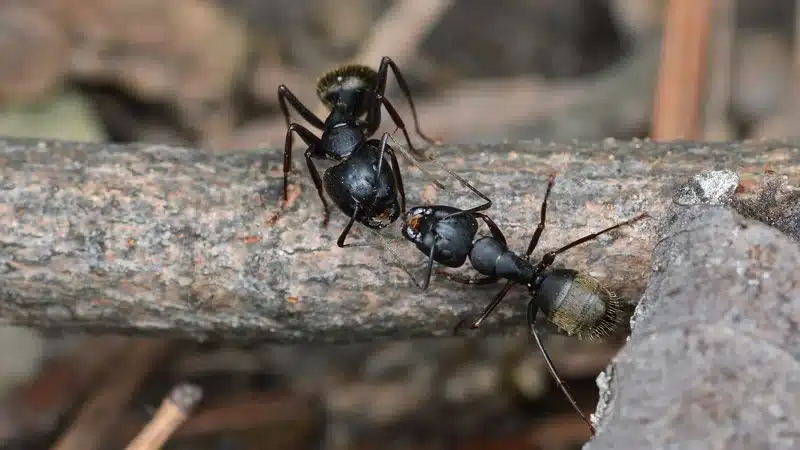Worker ants are the busy females you spot on your counter or baseboard. They make up most of an ant colony and perform every job except reproduction. In my years with over a hundred calls, I’ve seen them in kitchens and bathrooms, tracing trails that reveal their entry points.
The Ant Colonies Caste System: Worker Ants vs Queens and Males
An ant colony has three castes: queens, males, and worker ants. Worker ants are sterile, wingless females that handle all non-reproductive tasks. Queens are larger with wings (initially) and an egg-filled abdomen. Males have wings and big eyes for mating flights.
Some species show polymorphism among worker ants. Minor workers tend brood while major workers—often called soldiers—guard the nest. Each subcaste is tailored to specific jobs.
What Are Worker Ants? Biology, Life Cycle, and Key Characteristics
Worker ants share a three-part body plan: head, mesosoma, and gaster (learn more at Ask A Biologist). They have a narrow waist with one or two petiole nodes and elbowed antennae. Workers lack wings and have powerful mandibles for cutting and carrying.
Size can range from 1 mm to over 12 mm, and color varies from brown to black, or even red and bi-colored. Anatomy like thorax spines in pavement ants helps tell species apart.
How to Identify Worker Ants in Your Home
Worker ants enter through tiny cracks, gaps around pipes, and foundation faults. They leave visible pheromone trails that guide nestmates to food. You might find trails along baseboards or under sinks.
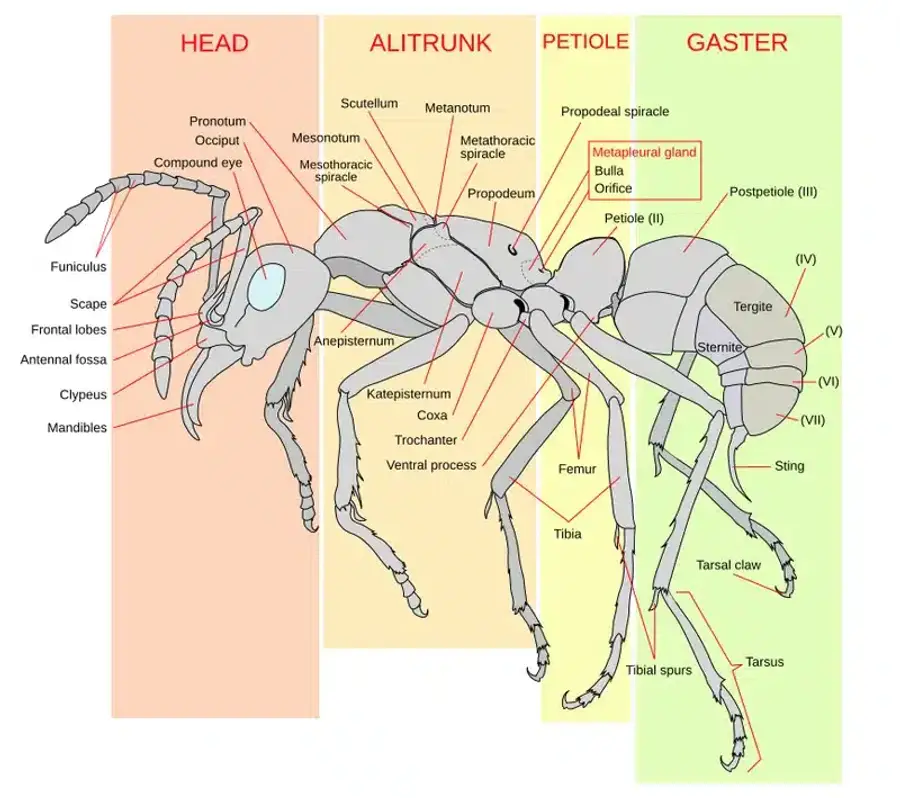
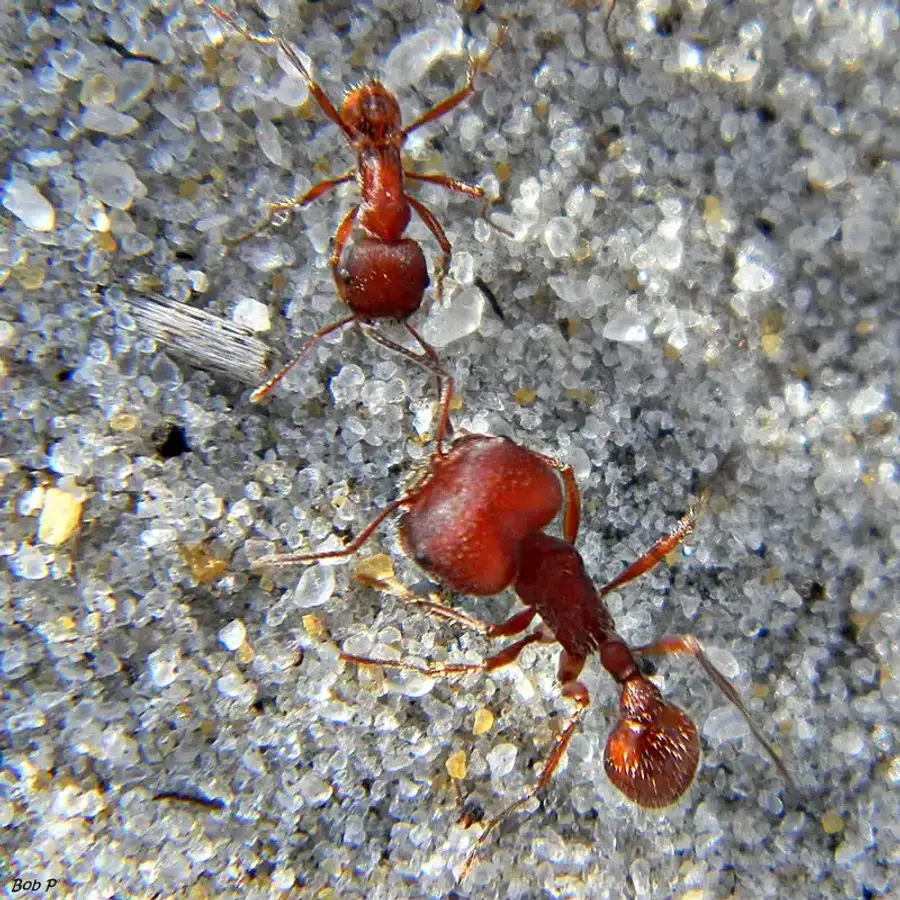
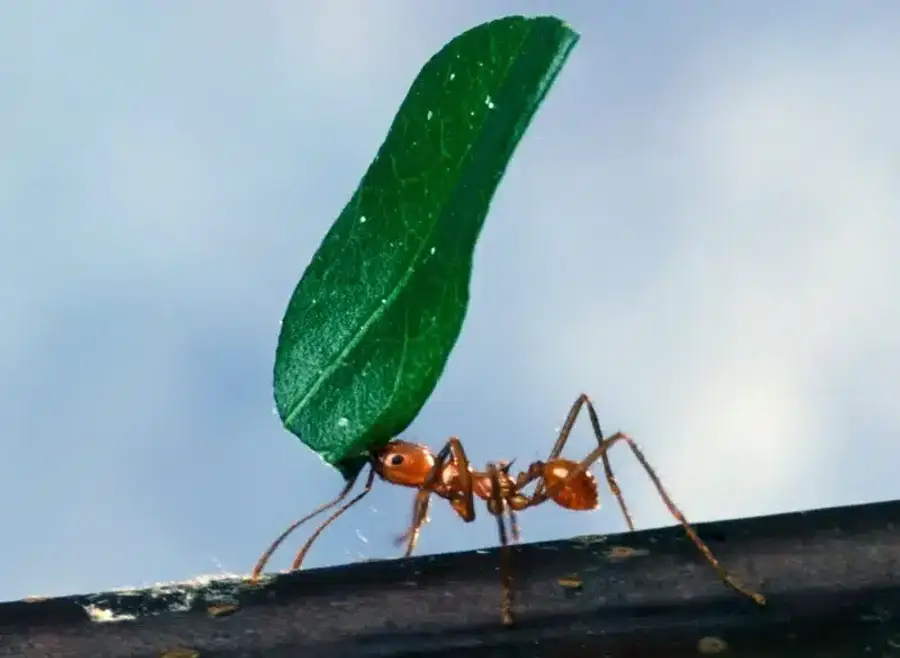
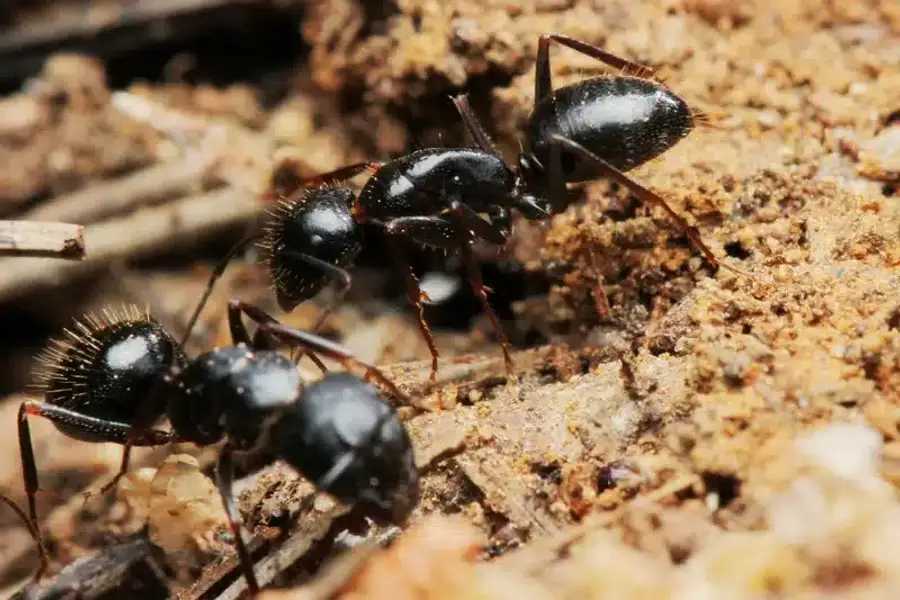
Additionally, watch for small piles of debris or sawdust—signs that workers are chewing through wood or insulation.
Distinguishing Worker Ants from Queen and Male Ants
Workers are smaller with a streamlined mesosoma. Queens have a bulkier thorax for flight muscles and visible wing scars after they shed their wings. Males often have smaller heads but larger eyes and slender bodies.
While queens and males fly off in swarms, worker ants remain ground-bound, foraging day and night.
Comparing Worker Ants to Termites and Other Pests
Ants have a narrow waist and elbowed antennae, whereas termites show a thick waist and straight antennae. Winged ants have uneven wing sizes, unlike termites whose wings match in length. For more tips, see Termites vs Flying Ants.
Other nuisance insects lack the petiole nodes that define ants.
The Many Ants of VA/MD/DC: Common Worker Ant Species in the Region
- Pavement ants
Small (3 mm), brown to black, two waist nodes and thorax spines. Nest under concrete and fight rival colonies on sidewalks. - Odorous house ants
Tiny (3 mm), brown-black, single hidden node. Give off a rotten coconut scent when crushed. - Eastern black carpenter ants
Large (6-13 mm), black, single node and smooth rounded thorax with a golden hair fringe. They tunnel in damp wood (see our Short Guide To Carpenter Ants). - Acrobat ants
Bi-colored (≈3 mm), two nodes, propodeal spines. They lift their heart-shaped gaster over their thorax when disturbed. - Little black ants
Very tiny (2 mm), jet black, two nodes and no thorax spines. They form big colonies and forage for sweets or grease. - Pharaoh ants
Tiny (2 mm), yellowish brown, two nodes, no spines. They nest indoors in wall voids and are tough to track.
For a regional overview, check Kinds of Ants: Identifying Different Types in DC Metro.
How Worker Ants Behave: Foraging, Nesting, and Communication
Worker ants use pheromone trails to recruit nestmates to food sources and adapt when trails fade. Alarm pheromones signal workers to defend the nest, and trophallaxis (mouth-to-mouth feeding) shares nutrients and chemical cues.
They also maintain nest temperature and humidity by moving brood and excavating tunnels.
Why Identifying Worker Ants Matters for Treatment
Knowing the species guides effective control. Carpenter ants require checks for wood moisture and tunnels. Odorous house ants demand precise bait placement. Otherwise, DIY tactics often miss hidden nests.
Best Practices for Ant Control and Preventing Worker Ant Infestations
Prevention Checklist
- Seal cracks around doors, windows, and pipes
- Keep counters and floors free of crumbs and spills
- Store food in tight containers
- Trim vegetation and mulch away from foundations
These steps cut off worker ants’ access to your home.
The Better Termite & Pest Control Method for Worker Ants
Our process starts with an expert phone consult and a 78-point inspection by licensed technicians. We apply EPA-approved, non-repellent insecticides in cracks and along the perimeter. This lets worker ants carry treatment back to the nest.
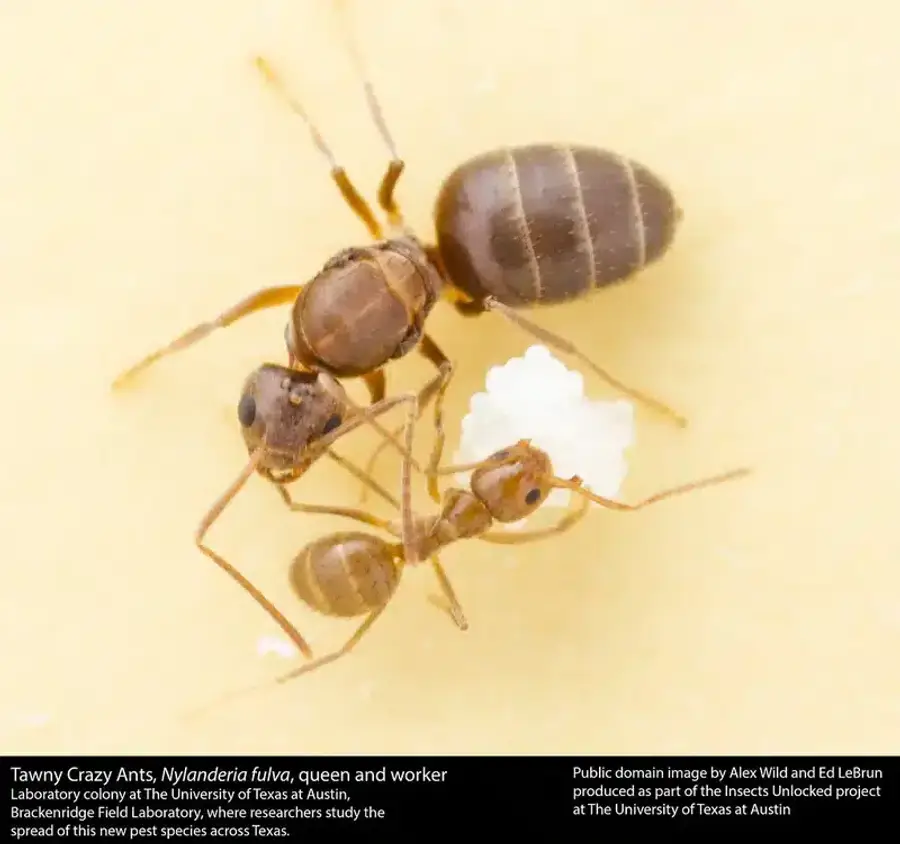
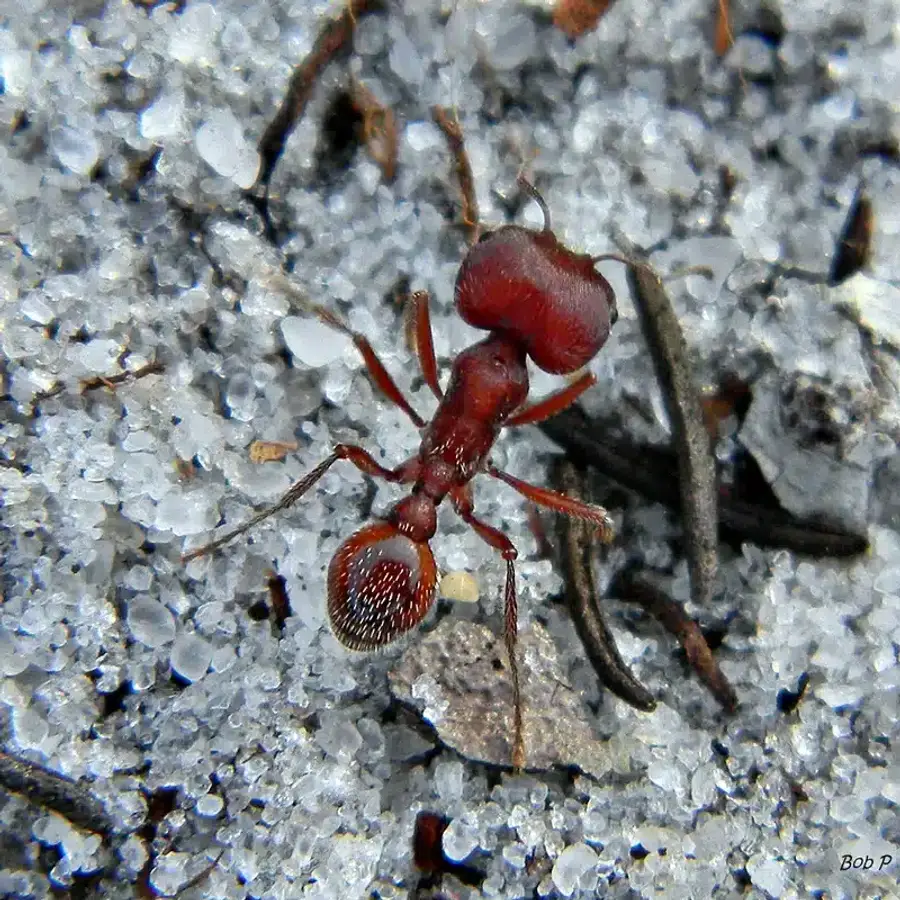
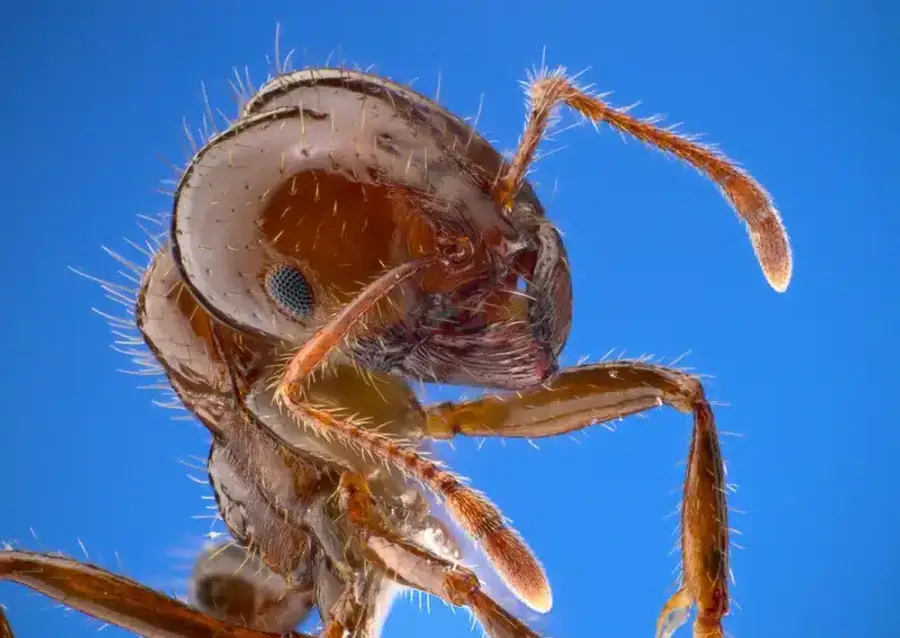
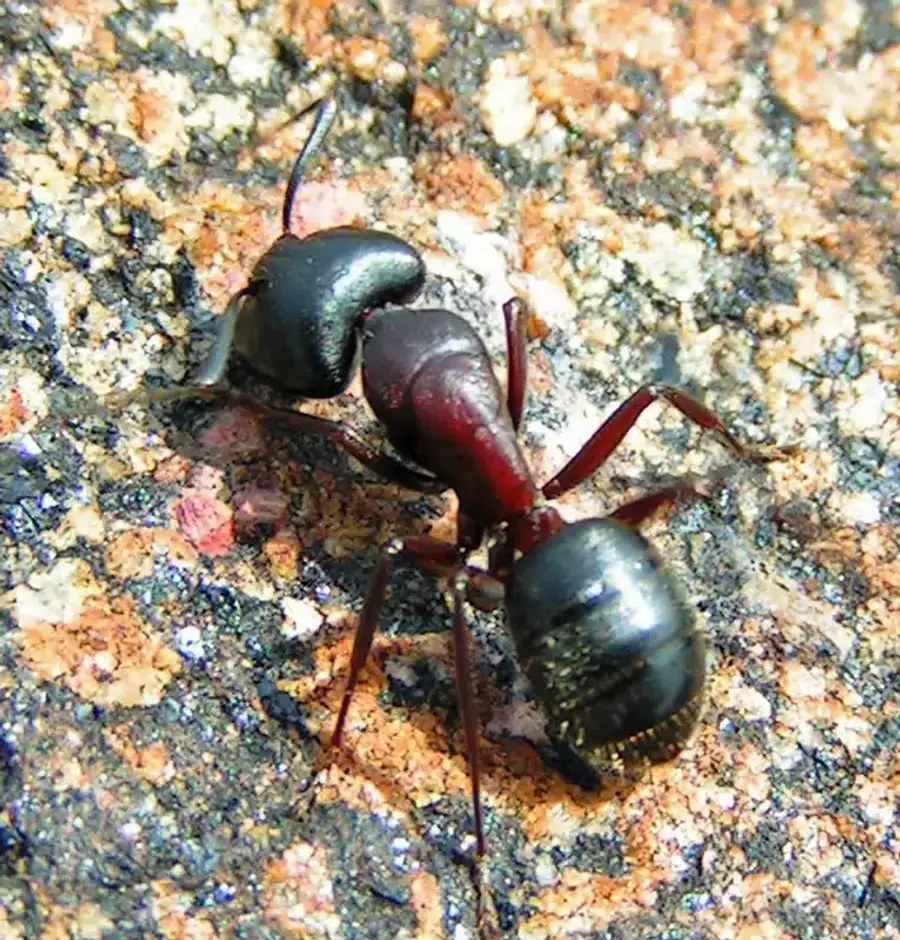

Tri-annual visits (three times per year) and unlimited callbacks ensure we tackle worker ants until you reach a good baseline. All products pass our internal research standards.
Worker Ants and Home Risks: Structural and Health Impacts
Property and Health Concerns
Carpenter ant workers excavate wood, leaving sawdust and weakened structures. Some species can bite or spray formic acid, causing mild irritation. Worker ants can also contaminate food and, in rare cases, spread bacteria if they trail through unsanitary areas.
Worker Ants in the Urban Ecosystem: From Weaver Ant to Local Species
Worker ants are ecosystem engineers. Their tunneling boosts soil aeration and nutrient cycling. Ant-driven seed dispersal helps plants germinate away from predators. As predators and scavengers, they curb pest populations and speed decomposition. Learn more about their ecological role from Insect Lore.
Case Study: Identifying and Treating Worker Ants in Woodbridge, VA
A homeowner called about trails of tiny ants on the kitchen counter. Our inspection showed odorous house ants entering at a pipe gap. We applied targeted crack-and-crevice treatment inside and a perimeter barrier outside. Follow-up visits kept their kitchen ant-free.
Author’s Field Tips: Quick Worker Ant ID Tricks
Resources and Further Reading
- What Do Carpenter Ants Eat? Food Sources & Control Tips
- Common Ants in Alexandria, Virginia
- Northern Virginia Pest Control
- Pest Control Arlington
- Ant Lifespan: Development Stages and Treatment Tips
- Do Ants Sleep? Revealing Ant Rest Patterns & Facts
Conclusion
Identifying worker ants is the first step to solving your ant issue. With clear ID and targeted treatment, you can protect your home from damage and contamination. For any questions or a free estimate, call us at 703-683-2000 or email info@bettertermite.com.
Frequently Asked Questions
What do worker ants do in a colony?
+
Worker ants handle foraging, brood care, nest maintenance, and defense. They do everything except reproduce.
How big are worker ants compared to queen ants?
+
Workers are smaller with a lean thorax. Queens can be two to three times larger with a bulkier thorax for flight muscles.
Can worker ants sting or bite humans?
+
Most worker ants bite or pinch. Some species like fire ants also sting. In local ants, bites cause mild irritation or a burning feeling.
How can I tell worker ants apart from termites?
+
Ants have a narrow waist and elbowed antennae. Termites have straight antennae and a thick waist. Wing length on fliers also differs.
Where do worker ants nest inside my home?
+
Common spots include wall voids, insulation, wood gaps, and under sinks. Carpenter ants may tunnel in damp wood.
Are worker ants harmful to my property?
+
Carpenter ant workers can weaken structures and leave sawdust. Other species mostly cause contamination of food and minor damage.
How fast do worker ant infestations grow?
+
Ant colonies can grow by thousands of workers each season. Rapid food access and warm conditions speed up growth.
What attracts worker ants to my kitchen?
+
Leftover crumbs, spills, open food packaging, and even moisture can lure worker ants into kitchens and pantries.
Do worker ants carry diseases?
+
While not common carriers, ants can pick up bacteria like Salmonella if they cross unsanitary areas. That's why food contamination worries matter.
Can I use DIY bait stations for worker ants?
+
DIY baits sometimes work on odorous house ants and pavement ants. However, without proper ID and placement, workers may ignore or avoid baits.
With five years of hands-on experience in the pest control industry, George Schulz is a registered technician with the Virginia Pest Management Association and a proud third-generation professional in a family business that's been protecting homes for over 57 years. He manages and trains a team of service pros while also leading internal research efforts—recently spearheading a deep-dive review of thousands of documents on pest control materials to hand-pick the most kid and pet friendly, most effective solutions tailored specifically for homes in the DC metro area.
